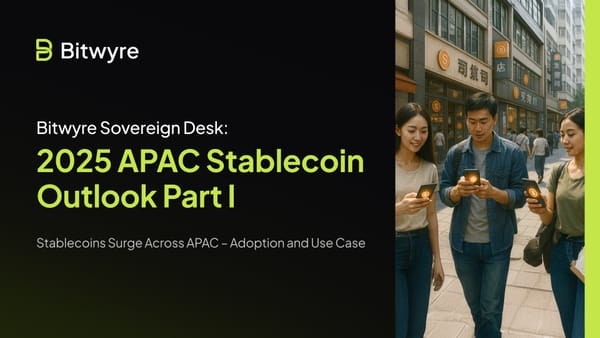The Stable Hegemony, Made in China: Digital Currency and The Next Front in the US–China Cold War
With digital dollars now underwriting US debt and slipping past the Great Wall, the next front in the US–China Cold War is being waged on-chain.

Let’s forget about tech tariffs and the semiconductor splits for a moment. Digital finance is rife with conflicts and we’re all here for it. The premise feels evergreen these days: stablecoins, pulled between West and East, a magnet held in perfect tension. This classic rivalry deserves a revisit every now and then. Now, more than ever, amid all the ongoing spectacles, we need to know where we stand.
It’s no coincidence that over 99% of stablecoin market value is denominated in US dollars. Tether (USDT), Circle’s USDC and others serve as a secret medium through which the US dollar is exported globally without a physical pipeline.
Not to be underestimated, these digital dollars are being used far from US shores, fueling cross‑border commerce, trade settlements, and everything in between. Yet behind the scene, the regulators and policymakers in Washington see a new geopolitical weapon against Beijing.
Welcome to the Sovereign Desk.
Tether’s Q1 2025 attestation reveals a staggering $120 billion in US Treasury holdings, with ~$98.5 billion in direct bills and the rest via repos and money markets. In 2024 alone, Tether net‑bought $33.1 billion in Treasuries, ranking it among the top seven foreign purchasers.
Tether published its Q1 2025 attestation, showing that as of March 31, 2025, Tether's total exposure to U.S. Treasuries reached a record high of nearly $120 billion. Additionally, its total assets exceeded $149.27 billion, with liabilities at $143.68 billion, resulting in assets…
— Wu Blockchain (@WuBlockchain) May 1, 2025
Wu Blockchain on Tether's Q1 2025 attestation
Circle’s USDC doesn’t lag far behind, it’s expanded its balance sheet by $19 billion in 2024, backed by similar high‐quality collateral. Held up by fully‑reserved assets, USDC reinforces dollar stability outside official channels. These private stablecoin issuers prop up US debt markets, financing deficits in real time… without a single vote from Congress.
Beijing Answers: Sits the Yuan in Neutral Grounds
You can imagine Beijing watching this digital dollar onslaught with growing alarm. It is also reported that JD.com and Ant Group are lobbying for an offshore yuan‑pegged stablecoin, starting in Hong Kong to challenge US dollar digital supremacy.
The logic for China is quite simple here. Hong Kong stands as the perfect conduit, providing neutrality, liquidity, and legal credibility, becoming the perfect environment for a Yuan stablecoin that travels globally. Some parties also warn that the global expansion of US dollar stablecoins threatens to further marginalize the yuan.
With the yuan accounting for only 2.9% of global payments share versus the dollar’s 48.5%. China needs to fight this head-on if the Yuan is to survive, let alone thrive. So what is at stake here?
Trojan Horse Dollarization
By reinvesting user deposits into Treasuries, US stablecoins become de facto dollar proxies, effectively reinforcing international demand for US assets as traditional foreign buyers like China gradually retreat.
Capital Flight & Trade Bypasses
Chinese exporters, limited by domestic capital controls, are increasingly accepting USDT for payments, which grants them instantaneous settlement, 24/7 via offshore rails. Using crypto simply bypasses Chinese banking constraints and limitations, but also deepens the dependence on dollar infrastructure.
Regulatory Game‑theory
In Washington, the administration and its allies are encouraging regulated stablecoin expansion as a “dollar diplomacy” tool. Europe’s Amundi warns such dominance could undermine national monetary sovereignty. Meanwhile, Wall Street giants push for fresh demand for US debt, opting to go as well with lower remittance rates and broader capital flows.
How the Washington Fares within The Next Front
It goes without saying that the US currently controls the majority of the ground, with private stablecoins doing the Fed’s work without official oversight. Yet this leverage cuts both ways:
- A major crypto crash, hack, or legal scandal could trigger global ripple effects.
- The Genius Act and Senate frameworks may crack down on opaque issuers like Tether, pushing them offshore, possibly to El Salvador or Asia.
Meanwhile, China advances its offshore Yuan stablecoin with disciplined state‑backed reserves, seeking a credible alternative to USDT/USDC. Launching in Hong Kong in August 2025 could be the first true strike back.
The outcome of the digital currency cold war now hinges on two key bets:
- The US hopes to ride private stablecoin dominance to sustain its debt markets and dollar hegemony.
- China bets on a well‑funded, offshore yuan stablecoin to (try to) erode dollar dependency and internationalize its currency.
With private U.S. stablecoin issuers now among the largest buyers of Treasury debt they are effectively underwriting American deficits without touching Capitol Hill. Every new stablecoin in circulation props up demand for dollars beyond the crypto markets, into sovereign finance itself.
China sees the risk clearly. Among others, capital is slipping through offshore channels the state cannot fully control. The planned launch of an offshore yuan stablecoin in Hong Kong might be more than a tech play. In hindsight, perhaps it can be seen as a defensive maneuver; a push, empowered by the state to rebuild monetary influence through quiet ways.
References:
- federalreserve.gov
- bankwatch.ca
- thetokendispatch.com
- coindesk.com
- bankwatch.ca
- tether.io
- reuters.com
- coindesk.com
- reuters.com
- marketwatch.com
- reuters.com
- wsj.com
- reuters.com
The Sovereign Desk editorial is open for conversation. If you’ve observed notable flows, rumours, or data points that warrant attention, please reach out to us:
Dendi Suhubdy at [email protected]
Faisal Mujaddid at [email protected]
Looking to execute large crypto trades with precision, privacy, and zero slippage? Schedule a call with the team at t.me/dendisuhubdy or shoot us an email at [email protected]. Bitwyre’s OTC desk handles high-volume transactions with deep liquidity and bespoke settlement.
We’re also rolling out a stablecoin payments app that lets you bypass OTC entirely, allowing you to use your stablecoins directly for payments at Visa-supported merchants worldwide. Sign up for the waitlist here.




